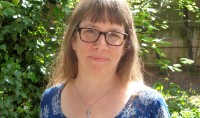Reading Toni Morrison in Advent
A seasonal practice: cultivate the patient gaze to describe life as we find it.

The historian of religion Davíd Carrasco loves to tell the story of a conversation he once had with Toni Morrison when they were both teaching at Princeton University. Morrison had asked for his assistance in researching Afro-Brazilian religions for a novel she was working on, and he remarked to her that one day he’d like to write something about the religious dimensions of her work. He told her he was fascinated by how she drew upon so many different religious traditions in her novels—African religions, Christianity, shamanism, and more.
“Yes,” she said, “you’re right, I do draw on those sources. But you left out the other part of the religion in my work.”
“What’s that?” he asked.
“The strange stuff,” she said.
Morrison, the Nobel Prize–winning novelist and essayist who died in August, illuminates the history of this country as few writers have. Her richly imagined explorations of black life in the United States from the Middle Passage to the present day etch the past into the imaginations of her readers in deeply human detail. If we are ever able to face up to that past as a country, we will have Toni Morrison, in part, to thank.
Read our latest issue or browse back issues.
Morrison grounds her profound understanding of our history in the lives of characters who must contend with the weight of that history and in her fine-grained attention to their ordinary moments. In Paradise, when she describes a sleepless woman in an all-black town in Oklahoma slipping a shawl around her shoulders and walking out into the night knowing she is safe from white violence, as readers we feel the cool air on our own shoulders. When two men in Beloved share a quiet joke, their banter falls on our ears like a blessing. When she shows us two women sorting through a bushel basket of melons to find the ripest in Home, we can smell the sweetness.
Morrison makes her readers work, letting us struggle in the first pages of each book to discover where we are in space and time. But even before we get our bearings, she captures us with her evocation of life itself.
Under her patient gaze, the excess presence in the world reveals itself. In Morrison’s work, the strange stuff is not separate from everyday life but is rather an integral part of it, a glimpse of its depths. The return of Sethe’s dead child in Beloved, the murdered women in Paradise who take off together in a Cadillac, the mysterious zoot-suiter who appears in Home to bless Frank Money along his journey—this strange stuff draws our attention to the inhumanity of the system of slavery, the vulnerability of marginalized women to the violence of men, and the deep human desire for freedom.
In Advent, with Christmas shining in the distance, we are on the verge of a lot of strange stuff: prophets who shout themselves hoarse, angels who turn up in the ordinary places where people live and work. Mary, greeted by an angel in her own hometown, knows this stuff is strange. “How,” she asks the angel, “can this be?”
As in Morrison’s novels, the strange stuff of this season draws our gaze to the margins—to the vulnerable people championed by the prophets, to the shepherds who work while others sleep, to the young unwed mother. The prophets and the angels cast their strangeness over Advent, but they also help us see the mystery that is already there, pouring out of these lives like a blessing, illuminating the strange and wondrous presence of God in the midst of ordinary life.
We set out during Advent into a new liturgical year, following Jesus as he enters the world and keeps entering it, more and more deeply, more and more compassionately, more and more courageously as the year unfolds. Following in his footsteps means following in the footsteps of others who have followed him, including Toni Morrison, who took the name of the desert monk St. Anthony when she converted to Roman Catholicism at 12, a name her friends shortened to Toni.
The work of Toni Morrison might teach us a new Advent practice: cultivating the patient, attentive gaze of a novelist seeking to describe life as she finds it. For Morrison, life was suffused with strange stuff that opens toward complexity and depth, that urges us to look and to keep looking, that asks us not to turn away from each other or from our shared history. For her, that strange stuff was part of the religious dimension of her work, for religion also points us toward the depths and asks us to keep our eyes open. “Lift up your eyes and look around,” Isaiah says to us this Advent and every Advent.
Virginia Woolf—the subject of Toni Morrison’s masters thesis—once wrote that “every moment is the center and meeting place of an extraordinary number of perceptions which have not yet been expressed.” Like Woolf, Morrison devoted herself to staying with the moment long enough to see the strange stuff—long enough for the ordinary moment to begin to shine its light on us, on the history to which we belong, and on the world all around. This kind of devoted attention, this kind of patient waiting to see what will be revealed, is an artistic practice and also an Advent practice. May Advent make artists of us all.
A version of this article appears in the print edition under the title “The strange stuff.”






